286 scholarly books by Haus Publishing and 10
start with G
286 scholarly books by Haus Publishing and 10
286 scholarly books by Haus Publishing
10 start with G start with G
10 start with G start with G

The Geckos of Bellapais
Memories of Cyprus
Joachim Sartorius
Haus Publishing, 2013
The history of Cyprus offers a reflection of larger world history. Coveted by a succession of foreign powers, it has been repeatedly occupied: the Phoenicians, Greeks, Romans, Byzantines, crusaders, Venetians, Genoese, Ottomans, and British have all left their mark on this Mediterranean island. Alongside the Roman and early Byzantine ruins of Salamis, other impressive monuments date from the Frankish and Venetian times, including the Abbey of Bellapais; the fortified harbor of Kyrenia; the magnificent cathedrals of Nicosia; and Famagusta, the setting for Shakespeare’s Othello.
In The Geckos of Bellapais, Joachim Sartorius shares the cultures and legends, colors and lights of the Levant. He explores the island’s history—including its division after the Turkish invasion of 1974 and the difficulties that followed. A revealing exploration of Cyprus after the Turkish partition and an evocative account of one poet’s life on one of the most beautiful islands in the Mediterranean, this book belongs among the world’s best travel writing.
In The Geckos of Bellapais, Joachim Sartorius shares the cultures and legends, colors and lights of the Levant. He explores the island’s history—including its division after the Turkish invasion of 1974 and the difficulties that followed. A revealing exploration of Cyprus after the Turkish partition and an evocative account of one poet’s life on one of the most beautiful islands in the Mediterranean, this book belongs among the world’s best travel writing.
[more]

General Smuts
South Africa
Antony Lentin
Haus Publishing, 2009
Jan Smuts was one of the key figures behind the creation of the League of Nations; Wilson was inspired by his ideas, including the mandates scheme. He pleaded for a magnanimous peace, warning that the treaty of Versailles would lead to another war.
[more]
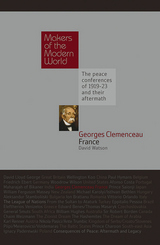
Georges Clemenceau
France
David Watson
Haus Publishing, 2010
The Anglo-Saxon view of Georges Clemenceau (1841-1929) is based on John Maynard Keynes's misjudged caricature, that he had imposed a treaty that was harsh and oppressive of Germany. French critics' view, however, is that he had been too lenient, and left Germany in a position to challenge the treaty. In fact the treaty was a just settlement, and it could have been maintained. The failure was not in the terms of the treaty but in the subsequent failure to insist on maintaining them in the face of German resistance.
[more]

German Jerusalem
The Remarkable Life of a German-Jewish Neighborhood in the Holy City
Thomas Sparr
Haus Publishing, 2024
The fascinating history of German Jews who built a community just outside Jerusalem.
In the 1920s, before the establishment of Israel, a group of German Jews settled in a garden city on the outskirts of Jerusalem. During World War II, their quiet community, nicknamed Grunewald on the Orient, emerged as both an immigrant safe haven and a lively expatriate hotspot, welcoming many famous residents including poet-playwright Else Lasker-Schüler, historian Gershom Scholem, and philosopher Martin Buber. It was an idyllic setting, if fraught with unique tensions on the fringes of the long-divided holy city. After the war, despite the weight of the Shoah, the neighborhood miraculously repaired shattered bonds between German and Israeli residents. In German Jerusalem, Thomas Sparr opens up the history of this remarkable community and the forgotten borderland they called home.
In the 1920s, before the establishment of Israel, a group of German Jews settled in a garden city on the outskirts of Jerusalem. During World War II, their quiet community, nicknamed Grunewald on the Orient, emerged as both an immigrant safe haven and a lively expatriate hotspot, welcoming many famous residents including poet-playwright Else Lasker-Schüler, historian Gershom Scholem, and philosopher Martin Buber. It was an idyllic setting, if fraught with unique tensions on the fringes of the long-divided holy city. After the war, despite the weight of the Shoah, the neighborhood miraculously repaired shattered bonds between German and Israeli residents. In German Jerusalem, Thomas Sparr opens up the history of this remarkable community and the forgotten borderland they called home.
[more]
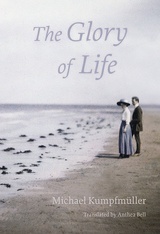
The Glory of Life
Michael Kumpfmüller
Haus Publishing, 2014
The aftermath of Franz Kafka’s love affair with Dora Diamant is legend: refusing to honor his instructions to destroy his work when he died, Diamant saved Kafka’s writings and letters that were in her possession. These were later taken by the Nazis and are still being sought today. Her importance for Kafka’s literary legacy makes their all-too-brief relationship even more intriguing. Set over the course of his last year, The Glory of Life is compelling fictional re-imagining of this fragile, tender romance.
In July 1923, Kafka is convalescing by the Baltic Sea when he meets Diamant and they fall in love. He is forty years old and dying of tuberculosis; she is twenty-five and seems to him the essence of life. After a tentative first meeting, the indecisive Kafka moves with Diamant to Berlin, a city in the throes of political upheaval, rising anti-Semitism, and the turmoil of Weimar-era hyperinflation. As his tuberculosis advances, they are forced to leave the city for the Kierling Sanatorium near Vienna, a move that threatens the paradise they have created.
The first of Kumpfmüller’s novels to appear in English after his acclaimed The Adventures of a Bed Salesman, The Glory of Life is a meticulously researched and poignant portrait of one of the most enduring authors in world literature. Beautifully crafted, this book is an evocative rumination on the power of love and friendship.
In July 1923, Kafka is convalescing by the Baltic Sea when he meets Diamant and they fall in love. He is forty years old and dying of tuberculosis; she is twenty-five and seems to him the essence of life. After a tentative first meeting, the indecisive Kafka moves with Diamant to Berlin, a city in the throes of political upheaval, rising anti-Semitism, and the turmoil of Weimar-era hyperinflation. As his tuberculosis advances, they are forced to leave the city for the Kierling Sanatorium near Vienna, a move that threatens the paradise they have created.
The first of Kumpfmüller’s novels to appear in English after his acclaimed The Adventures of a Bed Salesman, The Glory of Life is a meticulously researched and poignant portrait of one of the most enduring authors in world literature. Beautifully crafted, this book is an evocative rumination on the power of love and friendship.
[more]
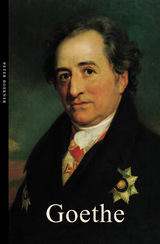
Goethe
Peter Boerner
Haus Publishing, 2013
Johann Wolfgang von Goethe (1749–1832) was one of the greatest thinkers of the modern age: a world-famous writer, scientist, and statesman, his influence was already far-reaching during his lifetime, and his literary and intellectual legacy continues to reverberate throughout contemporary culture. In this book, newly updated, Peter Boerner, a highly respected authority on Goethe, presents the definitive short biography of this extraordinary figure.
An exceptionally prolific and versatile writer, Goethe produced important works covering a range of genres. As a young man, he composed pastoral plays in the style of the waning Rococco, was an early proponent of the avant-garde Sturm und Drang movement, and became a literary superstar with The Sorrows of Young Werther, in which a young man’s unrequited love culminates in tragedy. In his classic play Faust, which evolved over a sixty-year period, he created one of the best-known versions of the legend and introduced the prototype of the romantic hero. A scientist active in various fields, including botany and the theory of colors, Goethe also pondered issues of evolution well before Darwin. In Boerner’s illustrated biography, Goethe’s impressive oeuvre comes to vibrant life.
A major contribution to the English-language literature on Goethe, this is a beautiful and accessible introduction to one of history’s foremost geniuses.
An exceptionally prolific and versatile writer, Goethe produced important works covering a range of genres. As a young man, he composed pastoral plays in the style of the waning Rococco, was an early proponent of the avant-garde Sturm und Drang movement, and became a literary superstar with The Sorrows of Young Werther, in which a young man’s unrequited love culminates in tragedy. In his classic play Faust, which evolved over a sixty-year period, he created one of the best-known versions of the legend and introduced the prototype of the romantic hero. A scientist active in various fields, including botany and the theory of colors, Goethe also pondered issues of evolution well before Darwin. In Boerner’s illustrated biography, Goethe’s impressive oeuvre comes to vibrant life.
A major contribution to the English-language literature on Goethe, this is a beautiful and accessible introduction to one of history’s foremost geniuses.
[more]
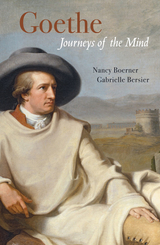
Goethe
Journeys of the Mind
Gabrielle Bersier, Nancy Boerner, and Peter Boerner
Haus Publishing, 2018
The German polymath Johann Wolfgang von Goethe is often seen as the quintessential eighteenth-century tourist, though with the exception of a trip to Italy he hardly left his homeland. Compared to several of his peripatetic contemporaries, he took few actual journeys, and the list of European cities in which he never set foot is quite long. He never saw Vienna, Paris, or London, for example, and he only once visited Berlin. During the last thirty years of his life he was essentially a homebound writer, but his intensive mental journeys countered this sedentary lifestyle, and the misconception of Goethe as a traveler springs from the uniquely international influence of his writing.
While Goethe’s Italian Journey is a classic piece of travel writing, it was the product of his only extended physical journey. The majority, rather, were of the mind, taken amid the pages of books by others. In his reading, Goethe was the prototypical eighteenth-century armchair traveler, developing knowledge of places both near and far through the words and eyewitness accounts of others. In Goethe: Journeys of the Mind, Nancy Boerner and Gabrielle Bersier explore what it was that made the great writer distinct from his peers and offer insight into the ways that Goethe was able to explore the cultures and environments of places he never saw with his own eyes.
While Goethe’s Italian Journey is a classic piece of travel writing, it was the product of his only extended physical journey. The majority, rather, were of the mind, taken amid the pages of books by others. In his reading, Goethe was the prototypical eighteenth-century armchair traveler, developing knowledge of places both near and far through the words and eyewitness accounts of others. In Goethe: Journeys of the Mind, Nancy Boerner and Gabrielle Bersier explore what it was that made the great writer distinct from his peers and offer insight into the ways that Goethe was able to explore the cultures and environments of places he never saw with his own eyes.
[more]

The Golden Step
A Walk Through the Heart of Crete
Christopher Somerville
Haus Publishing, 2012
For Somerville this was a kind of pilgrimage, a journey unlike any he had undertaken in 20 years of travel-writing. It was an expedition where he traded the usual comforts and certainties for a real physical and mental challenge, with no mobile phone or other technological aids. The only plan for his journey was to begin in the East at Easter and finish at Whitsun in the extreme West, at the Monastery of the Golden Step, whose gold step, legend says, can only be seen by those who have purged themselves into purity. During his 300-mile walk, he tackled four mountain ranges, high slopes and the numerous gorges of the West. Speaking only basic Greek and trying to follow a poorly way-marked path, he had to rely on his own instincts when climbing mountain passes and crossing high plateaux, farming and shepherding country, where villages are scarce and each night's accommodation was uncertain. He saw a Crete few ever encounter.
[more]

Greed
From Gordon Gekko to David Hume
Stewart Sutherland
Haus Publishing, 2014
In a riveting scene from the film Wall Street, Gordon Gekko proclaims that “greed is good.” The great philosopher David Hume, on the other hand, describes greed as the most destructive of the vices. The recent banking debacle and continuing uproar about executive bonus pay has placed the controversial issue of greed at the very heart of how we view modern society. Is Gekko’s maxim simply in need of some moderation? Or is Hume’s view too extreme?
In Greed, Stewart Sutherland examines these conflicting notions and discusses how we might approach the problem of greed today. He looks at the concept of incentives, which are essential for achieving results, and whether the desire for money is really as dangerous as it might seem. Powerful and timely, Greed is a much-needed look at an attitude that, for better or worse, is an unavoidable driving force in modern society.
In Greed, Stewart Sutherland examines these conflicting notions and discusses how we might approach the problem of greed today. He looks at the concept of incentives, which are essential for achieving results, and whether the desire for money is really as dangerous as it might seem. Powerful and timely, Greed is a much-needed look at an attitude that, for better or worse, is an unavoidable driving force in modern society.
[more]
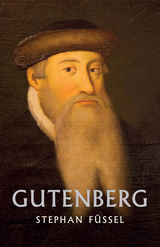
Gutenberg
Stephan Füssel
Haus Publishing, 2019
Named “Man of the Millennium” in 1999, Johannes Gutenberg was the creator of one of the most influential and revolutionary inventions in Europe’s history: a printing press with mechanical movable type. This development sparked the printing revolution, which is regarded as the milestone of the second millennium and represents one of the central contributions in the turn to modernity. His printing press came to play a key role in the development of the Renaissance, the Reformation, and the Age of Enlightenment, providing the material foundation for the modern knowledge-based economy and the spread of learning to the masses. His invention revolutionized the way that information is shared and broadened the boundaries of who has access to written knowledge. Paving the way for bibliophiles of today, the Gutenberg Bible of 1454 remains one of the most famous books in history.
Gutenberg’s technical innovations remained unrivalled for almost 350 years, until industrialization of the printing industry and the digital revolution built on the advances that he began, increasing the rate at which information is spread. Despite his significance in forming the world as we know it, there has not yet been a rigorous and accessible biography of Gutenberg published in English. Written by the leading expert on Gutenberg, Füssel’s biography brings together high academic standards and thorough historical details in a highly readable text that conveys everything you need to know about the man who changed printing forever.
Gutenberg’s technical innovations remained unrivalled for almost 350 years, until industrialization of the printing industry and the digital revolution built on the advances that he began, increasing the rate at which information is spread. Despite his significance in forming the world as we know it, there has not yet been a rigorous and accessible biography of Gutenberg published in English. Written by the leading expert on Gutenberg, Füssel’s biography brings together high academic standards and thorough historical details in a highly readable text that conveys everything you need to know about the man who changed printing forever.
[more]
READERS
Browse our collection.
PUBLISHERS
See BiblioVault's publisher services.
STUDENT SERVICES
Files for college accessibility offices.
UChicago Accessibility Resources
home | accessibility | search | about | contact us
BiblioVault ® 2001 - 2024
The University of Chicago Press









